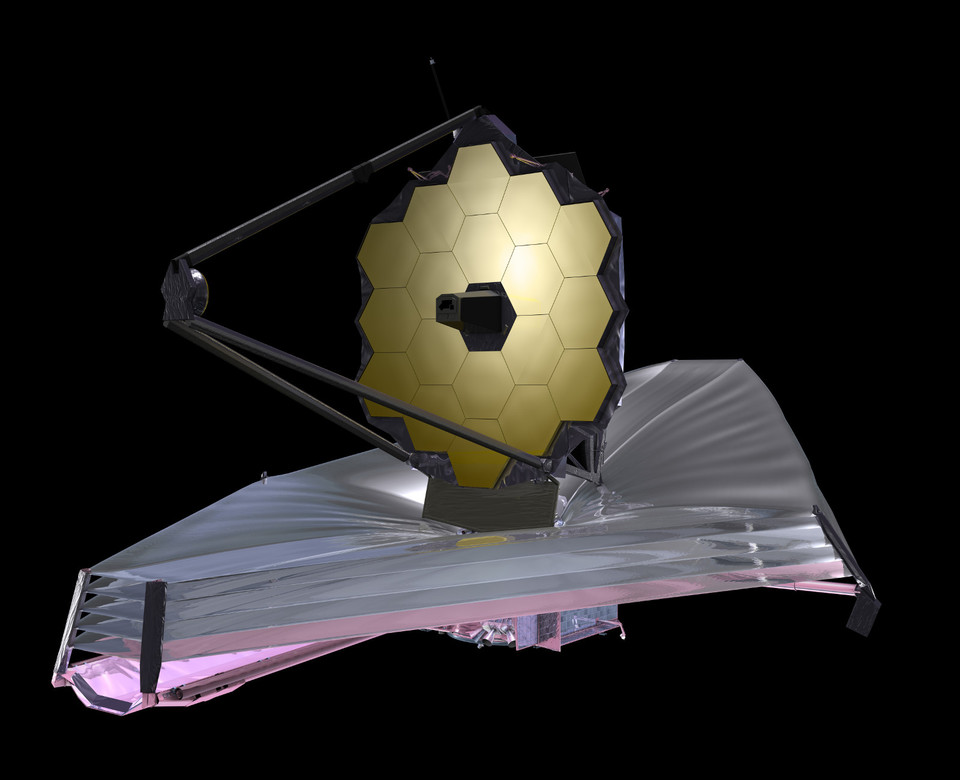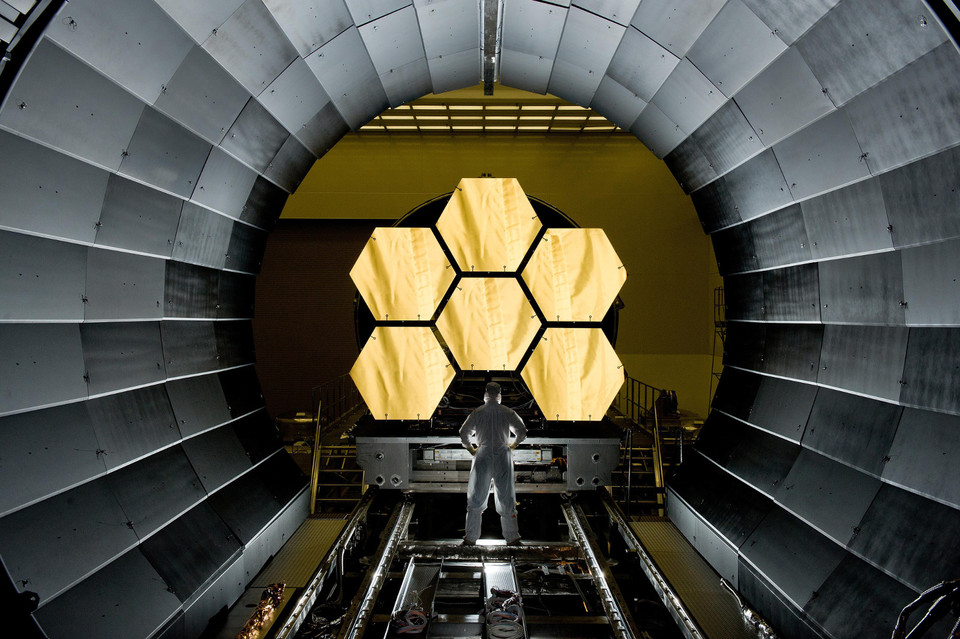The James Webb Space Telescope is a planned successor to the Hubble Space Telescope and the Spitzer Space Telescope, scheduled for launch in 2018. The telescope employs next-generation hexagonal architecture to exceed the technical abilities of its circular antecessors.
Large-scale telescopy is one of many emerging fields in which hexagonal geometries will prove increasingly useful in the future. The arrangement of hexagonal cells allows small, manageable components to form larger structures than would otherwise be unwieldy or impractical. Because of the close relationship between hexagons and circles, hexagonal cells can easily mirror so to speak the properties of traditionally circuloidal reflecting telescopes.
It is my contention that, in the future, we shall more and more find our circles being replaced with hexagons across all areas of human activity.
 James Webb Space Telescope
James Webb Space Telescope

